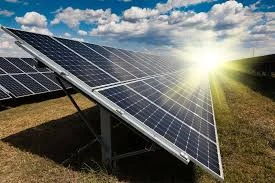Optimal Solar Panel Size for Efficient Energy Production and System Performance
Understanding System Size in Solar Panels A Comprehensive Overview
As the shift toward sustainable energy sources gains momentum, solar power has emerged as a popular choice for both residential and commercial sectors. One key aspect that potential solar energy users must consider is the system size of solar panels, which plays a crucial role in determining the efficiency and cost-effectiveness of the energy system. This article aims to provide a thorough understanding of what system size means in the context of solar panels and how to effectively evaluate and choose the best system for your needs.
What is System Size?
System size refers to the total capacity of a solar power installation, typically measured in kilowatts (kW) or megawatts (MW). It indicates how much energy the solar panel system can generate under ideal weather conditions. A larger system size generally means it can produce more electricity, but it also requires more space and a larger initial investment. This measurement not only helps in estimating energy output but also influences the return on investment (ROI) and payback period for solar energy systems.
Factors Affecting System Size
1. Energy Consumption To determine the appropriate system size, it is essential to understand the total energy consumption of the household or business. Reviewing utility bills over a year can provide insights into monthly energy usage, which can guide decisions on the necessary system size.
2. Roof Space The available space for solar panel installation is critical in determining system size. Not all rooftops are ideally suited for solar; factors such as shading from trees or buildings, orientation, and the angle of the roof can impact energy production. A smaller roof space may limit the system size, which could necessitate a more energy-efficient approach or additional energy-saving measures.
3. Sunlight Exposure The solar potential of a location heavily influences system size. Areas with higher sunlight exposure can generate more energy, allowing for smaller systems to meet energy needs. Conversely, regions with frequent cloud cover may require larger systems to compensate for reduced sunlight.
4. Inverter Capacity The inverter is a critical component that converts the direct current (DC) electricity generated by solar panels into alternating current (AC) electricity used in homes and businesses. The inverter's capacity must match the system size to prevent energy loss and ensure optimal performance.
Calculating the Right System Size
system size solar panel

To calculate the appropriate solar panel system size, the following formula can be used
\[ \text{System Size (kW)} = \frac{\text{Monthly Usage (kWh)}}{\text{Average Sunlight Hours per Day} \times 30} \]
For instance, if a household consumes 900 kWh monthly and receives an average of 5 hours of sunlight daily
\[ \text{System Size} = \frac{900}{5 \times 30} \approx 6 kW \]
This indicates that a 6 kW solar panel system would generally provide enough energy to meet that household's needs.
Benefits of Properly Sized Solar Systems
Choosing the correct system size can lead to numerous benefits. A system that closely matches consumption can lead to a reduced electricity bill, minimize the carbon footprint, and enhance energy independence. Furthermore, accurately sized systems can help avoid unnecessary costs associated with over-purchasing equipment or installation.
Conclusion
The system size of solar panels is a fundamental aspect that potential users must thoroughly understand when considering the transition to solar energy. By assessing energy consumption, available installation space, sunlight exposure, and inverter capacity, users can make informed decisions tailored to their specific needs. A well-sized solar power system not only optimizes energy generation but also maximizes the overall benefits of investing in renewable energy. As the world moves towards greener alternatives, understanding and correctly sizing solar panel systems will play a pivotal role in achieving energy sustainability.
-
Unlocking Energy Freedom with the Off Grid Solar InverterNewsJun.06,2025
-
Unlock More Solar Power with a High-Efficiency Bifacial Solar PanelNewsJun.06,2025
-
Power Your Future with High-Efficiency Monocrystalline Solar PanelsNewsJun.06,2025
-
Next-Gen Solar Power Starts with Micro Solar InvertersNewsJun.06,2025
-
Harnessing Peak Efficiency with the On Grid Solar InverterNewsJun.06,2025
-
Discover Unmatched Efficiency with the Latest String Solar InverterNewsJun.06,2025







